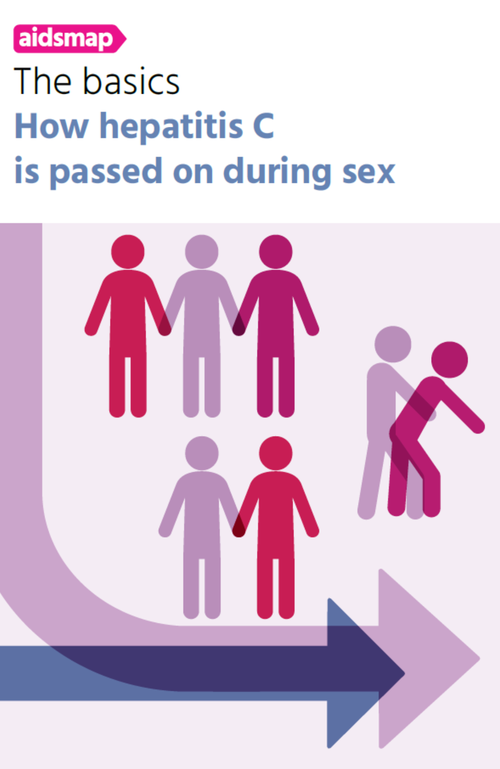
Access to direct-acting antivirals to cure hepatitis C has slashed incidence rates for groups most affected in Australia. Among gay and bisexual men living with HIV, incidence fell by 78% in 2019 when compared to 2015, the year before direct-acting antiviral treatment became widely available. A similar trend in hepatitis C infections was seen for HIV-negative men taking PrEP, with an 80% decline in 2019 compared to 2016.
Background
Hepatitis C disproportionately affects gay, bisexual, and other men who have sex with men living with HIV. A smaller number of HIV-negative gay and bisexual men – particularly those taking HIV pre-exposure prophylaxis (PrEP) – are also affected. Common risk factors include condomless anal sex, sexualised drug use, sharing injecting and other drug equipment, fisting and sharing sex toys.
The introduction of direct-acting antivirals has simplified and improved hepatitis C treatment significantly – over 90% of people who take them are fully cured of the infection. This contrasts with prior treatments, which lasted for a year, produced many side effects, and only resulted in a cure rate of 50% to 60%. Additionally, the efficacy of direct-acting antivirals is not affected by HIV status.
Based on the success of direct-acting antivirals to reduce rates of hepatitis C, the World Health Organization set a goal of 80% incidence reduction by 2030, relative to a 2015 baseline. With targeted resources, this can be achieved faster in highly affected subgroups, such as gay and bisexual men living with HIV.
There are studies that have looked at national-level changes in hepatitis C incidence among gay and bisexual men with HIV after introducing direct-acting antivirals. Some examples include France, the Netherlands, Switzerland and England. However, there have been no published studies looking at hepatitis C incidence among HIV-negative PrEP users.
In Australia, both medications became broadly available from 2016 after the government subsidised direct-acting antivirals, with no restrictions on treatment based on liver disease stage, substance use, or reinfection status.
The treatment could also be prescribed by nonspecialist primary care providers, and was made available in general practices and sexual health clinics.
PrEP, which was initially available to 7,500 people (predominantly gay and bisexual men) through implementation trials in 2016, also became widely accessible in 2018 through government subsidisation and general practitioner prescriptions.
The study
This study was conducted by Dr Brendan Harney of Monash University, Melbourne and colleagues, and published recently in Clinical Infectious Diseases. They used data from the Australian Collaboration for Coordinated Enhanced and Blood-borne Viruses (ACCESS), which collects data on blood-borne viruses and sexually transmitted infections from clinics and laboratories throughout the country.
The researchers looked at changes in hepatitis C incidence (the number of new infections) among gay and bisexual men, both living with HIV and HIV-negative, between 2009 and 2019, and specifically in HIV-negative gay and bisexual men who had been prescribed PrEP between 2016 and 2019.
The final incidence analysis included seven of the eight Australian states and territories, with hepatitis C data unavailable from the Northern Territory. Inclusion criteria included records containing information pertaining to hepatitis C testing (at least two or more tests, with the first one being negative), sexuality (recorded as gay or bisexual, reporting male sexual partners in the previous year or rectal STI swabs) and HIV-status.
The outcome of interest was a new hepatitis C infection, detected by either antibody or RNA testing between 2009 and 2019.
Incidence among gay and bisexual men with HIV
A total of 6,744 men with HIV were included in the incidence analysis, comprising 33,150 person-years of follow-up with 290 new hepatitis C infections for the period. This produced an overall incidence of 1.03 per 100 person-years, with the highest incidence in 2010 (2.12 per 100 person-years) and the lowest in 2019 (0.22 per 100 person-years).
As direct-acting antivirals only became widely available in 2016, 2015 was used as the baseline comparison year. Incidence declined in all subsequent years, falling by 60% in 2017, 45% in 2018 and 78% in 2019, relative to 2015. There was no significant change in the overall incidence trend between 2009 and 2015 and between 2016 and 2019. But a distinct difference was present between 2015 and 2016, indicating the importance of direct-acting antivirals in the incidence decline between the two periods.
Incidence among HIV-negative gay and bisexual men
Among all 20,590 HIV-negative men included in the analysis between 2009 to 2019, overall incidence was 0.20 per 100 person-years. During 60,512 person-years of follow-up, there were 122 new infections. Incidence fluctuated between 0.49 per 100 person-years in 2009 to 0.07 per 100 person-years in 2019. However, unlike the trend with gay and bisexual men with HIV, there was no change in incidence in 2016, 2017, or 2018 compared to 2015.
This was not the case for HIV-negative men taking PrEP: a significant decline in the incidence trend was seen in this group. Among the 11,661 men included from 2016 onwards, there were 56 new hepatitis C cases over 20,886 person-years with an overall incidence of 0.29 per 100 person-years. When compared to 2016, incidence among this group declined by a staggering 80% in 2019.
Conclusion
“These findings suggest that universal, unrestricted hepatitis C treatment among gay and bisexual men with HIV may also have a treatment-as-prevention benefit for gay and bisexual men more broadly,” the authors conclude. “Hepatitis C incidence among gay and bisexual living with HIV has declined significantly in Australia following the introduction of directly acting antiviral treatment.
Despite concerns in other countries, incidence among HIV-negative gay and bisexual men has declined since renewed peaks following large real-world PrEP implementation studies. These data are indicative of Australia being on track to achieve hepatitis C elimination among gay and bisexual men before 2030.”
Harney BL et al. The Incidence of Hepatitis C Among Gay, Bisexual, and Other Men Who Have Sex With Men in Australia, 2009–2019. Clinical Infectious Diseases, online ahead of print 25 October 2021.

